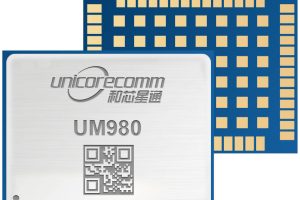 Sub-standard chip sales, components developed or altered by counterfeiters and sold in the market as originals, are exceeding a value of $75bn globally. Though not a new trend, counterfeiters are capitalising on the chip shortage and global constraints to move sub-standard products into the market more aggressively than they did in the past. This has wide reaching consequences for companies’ bottom lines – they are spending tens of thousands of pounds on new equipment and strategies to detect fake parts and are paying more than ever to source replacement components when sub-standard chips are identified.
Sub-standard chip sales, components developed or altered by counterfeiters and sold in the market as originals, are exceeding a value of $75bn globally. Though not a new trend, counterfeiters are capitalising on the chip shortage and global constraints to move sub-standard products into the market more aggressively than they did in the past. This has wide reaching consequences for companies’ bottom lines – they are spending tens of thousands of pounds on new equipment and strategies to detect fake parts and are paying more than ever to source replacement components when sub-standard chips are identified.
How can companies detect sub-standard components and how can they prepare for another year of risk through shortages? There are four main areas to consider. It is important to know the types of sub-standard components on the market; how to identify the signs of a sub-standard chip; how to verify components early in the supply chain; and how to understand industry trends and the sectors that are most affected.
The scale of the problem
There are several types of sub-standard components. They can be recycled and re-marked parts. These are components that have been removed from a used system, repackaged, and re-marked to be sold as new. These contribute to the majority of fraudulent or counterfeit incidents.
There are also over-produced and out-of-spec/defective parts that are often developed by untrusted foundries.
Cloning is another category. These parts have been reverse-engineered to meet original part specs, but are made with low-grade equipment, which hinders reliability.
There are also tampered products. These parts can include additional dye and/or hardware Trojans within the dye.
Most components identified as sub-standard are ‘blacktopped’. Blacktopping is a way to disguise illegitimate devices as authentic ones when they have been previously pulled off the shelf. A false top is put over the serial number of the piece that has the identification number of a different product.
It is important to note that there is not one specific industry that is most affected by a particular type of sub-standard component. Counterfeiters will use whatever is easiest or cheapest to produce and can most easily mask the component they are trying to replicate. With each type of sub-standard component, the true threat comes from end-use. Reliability products, where optimal performance is more critical than others, such as defence, aerospace and medical equipment, are more sensitive to sub-standard parts than others.
Sub-standard signs
There are several visual signs a buyer should look for while evaluating a component. The most common signs of sub-standard parts include faded or misaligned markings, uneven colouring, removed UV coating, inconsistent countries of origin, sanded or uneven surfaces, incorrect packaging and unmatched date codes.
Once a suspect product is identified, it will always require additional x-ray testing to find further inconsistencies and confirm suspicions. X-ray testing can identify specific part markings or lead frames, for example.
The semiconductor supply chain is under more scrutiny than ever before. The current component shortage has forced buyers to evaluate their processes, expand their supplier networks and make arrangements for alternatives of their ‘ideal’ components to ensure that they get the job done. With these changes comes the need for strict due diligence processes to avoid sub-standard chip suppliers.
Best practices
There are three general best practices for verifying supply chains: sourcing; measuring; and analysing. Buyers must comprehensively vet their supplier chain at the front end of the process and adapt business practices to make sure this task is done appropriately. This could mean having monthly reviews with a supply review board consisting of members from executive management and purchasing, quality and sales departments.
 To prepare for future supply chain disruption, a robust supplier network is critical and is the best line of defence. The caveat is that a network must be made up of the right suppliers. This is one aspect of the supply chain process that cannot be ignored or taken for granted; it is the first step in making sure end systems function at optimal levels.
To prepare for future supply chain disruption, a robust supplier network is critical and is the best line of defence. The caveat is that a network must be made up of the right suppliers. This is one aspect of the supply chain process that cannot be ignored or taken for granted; it is the first step in making sure end systems function at optimal levels.
Who is at risk?
The trend of sub-standard components is not new, nor will it ever fully go away.
The rate of technological change and sophistication of sub-standard components are consistent as end systems become higher tech. Certain strategies such as blacktopping or cloning are more robust than before due to the technological advancement and development of new component evaluation measures. The current semiconductor shortage and global supply chain disruptions mean the door is open for counterfeiters to have a hand in the game and that is not likely to change any time soon. In fact, the trend will get worse before it gets better.
The growth of sub-standard components will continue to concern reliability markets over the next several years since the shortage has encouraged prioritising scarce components and allocating resources to systems with higher profit margins. These are often high-tech consumer products with shorter lifecycles that people will naturally pay more for, more regularly.
High-reliability markets run counter to this. They seek to extend the lifecycle of their components and often do not have the resources to regularly update their systems to keep up with evolving technology. Those constraints make sourcing high-reliability components difficult, making these markets a prime target for counterfeiters and should be where buyers and manufacturers are alert towards sub-standard components in the coming years.
 Electronics Weekly Electronics Design & Components Tech News
Electronics Weekly Electronics Design & Components Tech News




I am an experienced embedded systems design consultant and do a lot of designs every year.
How did I handle the chip shortage?
– I tried to find various parts which had equivalent parts available with similar features, a pin-compatible footprint so that if one is not available I could use another.
– Another strategy I used was I bought the IC 1st and only then designed the board using that IC so that I know, that, I will be able to manufacture and test the board after my design is complete.
– During this process, I found various pin-compatible ICs and thought of sharing them here so that others can take advantage. It is not a big list but still, maybe someone could find it useful.